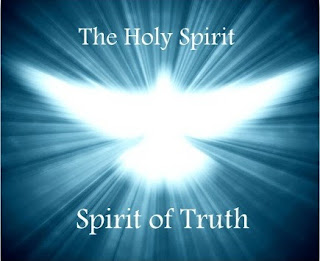What a preposterous question: was Jesus insane?! Those who are pious
Christians may even be offended that such a question is raised. On the other
hand, those who are highly anti-Christian may think the answer is obvious: in
most likelihood he was.
This is no new question, though. Early
in the Gospels we read, “When
his family heard what was happening, they came to take control of him. They
were saying, ‘He’s out of his mind!’” (Mark 3:21, CEB).
And repeatedly Jesus
was accused by his religious opponents of being possessed by demons. As you know,
demon possession was at that time the explanation of what we would call mental
illness.
The question of
Jesus’ sanity was raised anew in the nineteenth and first part of the twentieth
century. In 1913 Albert Schweitzer wrote his thesis for an M.D. degree. It was
titled (in English translation) “The Psychiatric Study of Jesus.”
According to
Schweitzer, the German theologian David Friedrich Strauss (1808-74) was the
first in modern times to conjecture that Jesus was “psychopathic.” Schweitzer,
however, mainly analyzed the works of three contemporary medical writers—a
German, a Frenchman, and an American—who between 1905 and 1912 sought to explicate
Jesus’ insanity.
Schweitzer’s
conclusion, though, was that the efforts of those who claimed Jesus was insane
fell “far short of proving the existence of mental illness.”
I started thinking about this topic when
reading a book with the unlikely title The
Ethiopian Tattoo Shop (1983), a collection of 22 “parables” written by Edward
Hays, a Catholic priest in Kansas. (The book was recently mentioned by a friend
who knows Hays, and I have heard others also speak highly of him.)
One of Hays’s stories is “The Hired
Hand,” a man that was wonderfully good and kind to his employer and his family.
But he said his name was Jesus Christ, and before long he was arrested as an
escapee from the “State Insane Asylum.”
What would happen, Hays wonders, if
Jesus were to reappear among us today? Quite possibly, he would be considered insane
or “demon possessed” just as he was when he lived on earth 2,000 years ago.
Then I began reading The Underground Church (2013), an
engaging book by UCC Pastor Robin Meyers. The first chapter is titled “Sweet
Jesus: Talking His Melancholy Madness.” That thought-provoking chapter is based
in part on the poem “Maybe” by Mary Oliver (which is also attractively
presented on Vimeo here).
Meyers also refers to Thomas Merton’s
reflections on Adolf Eichmann in Raids on
the Unspeakable (1964). At Eichmann’s trial, he was found to be “perfectly
sane,” and Merton found that disturbing. So he concluded that “in a society
like ours the worst insanity is to be . . . totally ‘sane’” (p. 49).
 Similarly, in Don Quixote Cervantes wrote, “When
life itself seems lunatic, who knows where madness lies? Perhaps to be too
practical is madness. To surrender dreams—this may be madness. Too much sanity
may be madness—and maddest of all: to see life as it is, and not as it should
be!”
Similarly, in Don Quixote Cervantes wrote, “When
life itself seems lunatic, who knows where madness lies? Perhaps to be too
practical is madness. To surrender dreams—this may be madness. Too much sanity
may be madness—and maddest of all: to see life as it is, and not as it should
be!”
This same sentiment is expressed by
the preeminent Japanese filmmaker Akira Kurosawa (1910-98): “In a mad world,
only the mad are sane.”
According to a former employee of the
CIA whom I heard speak earlier this month, the U.S., which during the Cold War
implemented the military strategy known as Mutual Assured Destruction (appropriately
known as MAD), still supports the same policy increasingly applied to the tense
relationship between Israel and Iran.
In this light, perhaps the “madness”
of Jesus is sanity, after all.




